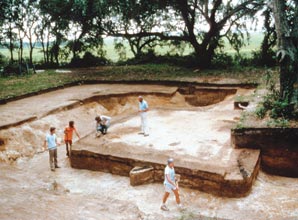Reference




OpenAI's Answer
Santa Elena played a crucial role in the Spanish colonial efforts in the 16th century, particularly in the southeastern region of what is now the United States. Here are some key points about its role:
-
Capital of Spanish Florida: Santa Elena served as the capital of the Spanish colony of La Florida from 1566 to 1587. This made it the center of Spanish colonial administration and operations in the region (source, source).
-
Military and Strategic Base: The Spanish used Santa Elena as a launching point for further exploration and military expeditions into the interior of North America. They built a series of forts from this base to protect their interests and exert control over the region (source).
-
Religious and Political Outreach: Santa Elena was also a center for religious activities and efforts to convert the Native American population to Christianity. The settlement conducted political outreach with the local tribes as part of its broader pacification efforts (source).
-
Economic and Settlement Hub: It was a pivotal settlement area, with a city government established. At its peak, the town had numerous settlers and was an essential location for Spanish citizens in the New World (source).
-
French-Spanish Rivalry: The location of Santa Elena was also strategic in countering French colonial ambitions. The Spanish established Santa Elena after ousting the French from the area, highlighting its role in the geopolitical struggle between European powers in North America (source).
Here are some images that depict Santa Elena and related artifacts:
In summary, Santa Elena was integral to Spanish colonial strategy, serving as a capital, military outpost, religious mission, and economic settlement, pivotal in the Spanish efforts to control and expand their territories in North America.
